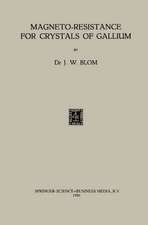Chemical Reactivity: Volume 2: Approaches and Applications
Editat de Savas Kaya, Laszlo von Szentpaly, Goncagul Serdaroglu, Lei Guoen Limba Engleză Paperback – 18 mai 2023
Following an insightful introduction, the book begins with an overview of conformer searching techniques before progressing to explore numerous different techniques and methods, including confined environments, quantum similarity descriptors, volume-based thermodynamics and polarizability. A unified approach to the rules of aromaticity is followed by methods for assessing interaction energies and the role of electron density for varied different analyses. Algorithms for confirmer searching, partitioning and a whole range of quantum chemical methods are also discussed.
Consolidating the knowledge of a global team of experts in the field, Chemical Reactivity, Volume 2: Approaches and Applications is a useful resource for both students and researchers interested in applying and refining their use of the latest approaches for assessing chemical reactivity in their own work.
- Compiles a broad range of contemporary methods and approaches for reactivity and structure prediction
- Highlights the application of chemical reactivity strategies for the investigation of such areas as aromaticity, halogen bonds, and electronic materials
- Includes discussion of computational tools for exploring molecular spaces from different angles, including interaction energies, quantum similarity, and electron density
| Toate formatele și edițiile | Preț | Express |
|---|---|---|
| Paperback (2) | 917.55 lei 5-7 săpt. | |
| ELSEVIER SCIENCE – 18 mai 2023 | 917.55 lei 5-7 săpt. | |
| ELSEVIER SCIENCE – 18 mai 2023 | 920.14 lei 5-7 săpt. |
Preț: 917.55 lei
Preț vechi: 1198.85 lei
-23% Nou
Puncte Express: 1376
Preț estimativ în valută:
175.56€ • 183.33$ • 144.98£
175.56€ • 183.33$ • 144.98£
Carte tipărită la comandă
Livrare economică 08-22 aprilie
Preluare comenzi: 021 569.72.76
Specificații
ISBN-13: 9780323902595
ISBN-10: 0323902596
Pagini: 500
Ilustrații: Approx. 105 illustrations
Dimensiuni: 152 x 229 x 27 mm
Greutate: 0.86 kg
Editura: ELSEVIER SCIENCE
ISBN-10: 0323902596
Pagini: 500
Ilustrații: Approx. 105 illustrations
Dimensiuni: 152 x 229 x 27 mm
Greutate: 0.86 kg
Editura: ELSEVIER SCIENCE
Cuprins
1. Applications of the quantum theory of atoms in molecules in chemical reactivity
2. Exploring chemical space with alchemical derivatives
3. Quantum chemical descriptors as a modeling framework for large biological structures
4. Quantum chemical reactivity, mutations, and reality: narrative essay
5. Volume-based thermodynamics approach in the context of solid-state chemical reactivity analysis
6. Predicting reactivity with a general-purpose reactivity indicator
7. Components of density functional reactivity theory-based stabilization energy: descrip
8. Electronegativity equalization principle: new approaches and models for the study of chemical reactivity
9. Electrophilic aromatic substitution: from isolated reactant approaches to chemical reactivity in solvent
10. Lessons from the maximum hardness principle
11. Electron density to analyze acids and bases of Lewis: computational tools
12. Phase modeling of donor–acceptor systems, continuity relations, and resultant entropy/information descriptors
13. Understanding odd-electron halogen bonding in the light of chemical reactivity indices
14. Using conceptual DFT for studies of metal complexes: some interesting examples
15. Noniterative solvation energy method based on atomic charges
16. Chemical reactivity in confined environment
17. Structure prediction using reactivity descriptors
2. Exploring chemical space with alchemical derivatives
3. Quantum chemical descriptors as a modeling framework for large biological structures
4. Quantum chemical reactivity, mutations, and reality: narrative essay
5. Volume-based thermodynamics approach in the context of solid-state chemical reactivity analysis
6. Predicting reactivity with a general-purpose reactivity indicator
7. Components of density functional reactivity theory-based stabilization energy: descrip
8. Electronegativity equalization principle: new approaches and models for the study of chemical reactivity
9. Electrophilic aromatic substitution: from isolated reactant approaches to chemical reactivity in solvent
10. Lessons from the maximum hardness principle
11. Electron density to analyze acids and bases of Lewis: computational tools
12. Phase modeling of donor–acceptor systems, continuity relations, and resultant entropy/information descriptors
13. Understanding odd-electron halogen bonding in the light of chemical reactivity indices
14. Using conceptual DFT for studies of metal complexes: some interesting examples
15. Noniterative solvation energy method based on atomic charges
16. Chemical reactivity in confined environment
17. Structure prediction using reactivity descriptors

























